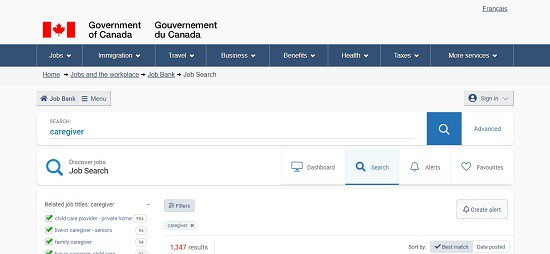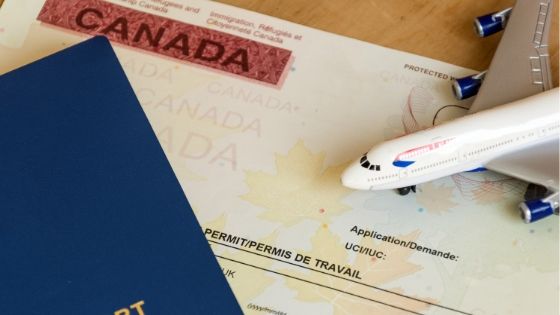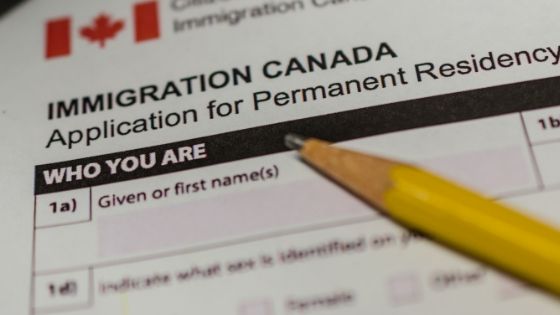How To Apply as a Caregiver in Canada From the Philippines
Many Filipinos dream of getting a job in Canada and, later on, bringing their families with them and building a life in one of the most accommodating countries for Filipinos.
Currently, Filipinos are the third-largest Asian group working and residing in Canada1, next to Indians and Chinese. Filipinos are the largest group of immigrants in Canada coming from Southeast Asia.
One of the most popular and fastest ways to become a permanent resident in Canada is through caregiver programs. In this guide, you’ll learn how to apply as a caregiver in Canada and use this job as a stepping stone to make your Canadian dream a reality.
Related: How to Get a Job in Canada: A Filipino’s Ultimate Job-Hunting Guide
Table of Contents
What Does a Caregiver in Canada Do?
The responsibilities of a caregiver in Canada are different according to the job type. Caregivers in Canada are classified according to National Occupation Classification (NOC). These are:
- Home Child Care Providers2 (NOC 4111) are responsible for the well-being and development of children on an ongoing or short-term basis. Their duties include assisting parents with child care, providing age-specific education and discipline, and performing household duties. Child-care agencies will most likely employ Filipinos who want to work as home childcare providers but can also be hired by private households. Other job titles include nanny, babysitter, and child care, live-in caregiver.
- Home Support Workers3 (NOC 4412) provide personal care, companionship, and support for seniors, people with disabilities, and injured or recovering clients. Filipinos moving to Canada will likely be employed by home care and support agencies rather than private households. Home support workers can also be classified as housekeepers if they handle home management duties such as cleaning, meal preparation, and other related services. They are also called personal care attendants, live-in caregivers, and respite workers.
How Much Is the Salary of a Filipino Caregiver in Canada?
According to the Job Bank of Canada, the following are the median salaries (presented here as hourly rates) of Home Child Care Providers, Home Support Workers, Housekeepers, and other similar occupations:
1. Home Child Care Providers
For Home Child Care Providers4, the national median is C$15.92. As of November 16, 2022, these are the median salaries per province or territory:
- Newfoundland and Labrador: C$15
- Prince Edward Island: N/A
- Nova Scotia: C$15.41
- New Brunswick: C$15
- Quebec: C$16
- Ontario: C$17
- Manitoba: C$15
- Saskatchewan: C$15
- Alberta: C$17
- British Columbia: C$16
- Yukon Territory: C$17.79
- Northwest Territories: N/A
- Nunavut: N/A
2. Home Support Workers
For Home Support Workers5, housekeepers, and other similar occupations, the national median is higher at C$19. As of November 16, 2022, these are the median salaries per province or territory:
- Newfoundland and Labrador: C$16.55
- Prince Edward Island: C$19.50
- Nova Scotia: C$18
- New Brunswick: C$14.80
- Quebec: C$17.28
- Ontario: C$19
- Manitoba: C$15
- Saskatchewan: C$19
- Alberta: C$18
- British Columbia: C$21
- Yukon Territory: C$24.84
- Northwest Territories: C$20.50
- Nunavut: C$25
Although the average salaries vary across the country, caregivers in Canada are generally well-compensated.
Factors that may increase or decrease your take-home pay include your qualifications, taxes/deductions in your payslip, different pay for holidays/overtime hours, the living expenses in the area, and the type of caregiving work you’ll render, among others.
Caregiver Programs in Canada for Filipinos: Quick Overview and New Updates
1. Open Caregiver Programs
a. Home Child Care Provider Pilot & Home Support Worker Pilot
In June of 2019, Canada’s Immigration Minister Ahmed Hussen6 announced two new pilot programs for caregivers in Canada: the Home Child Care Provider and Home Support Worker. The application for these 5-year caregiver programs officially opened on June 18, 2019.
Each program will accept a maximum of 2,750 applicants (Total: 5,500) annually. Applicants should expect up to 12 months of processing time. Through these programs, qualified caregivers and their immediate families can come to Canada to become permanent residents.
The following benefits are given to caregivers under these programs:
- Occupation-restricted open work permits, which will enable workers to change employers but only under the same occupation
- Elimination of the Labor Market Impact Assessment or LMIA
- Ability to get the work experience they need to apply for permanent residency
- Immediate family members (i.e., spouse and dependent children) can apply for work, and study permits as part of the caregiver’s application to the program
The programs have different pathways7 depending on the applicant’s amount of qualifying work experience as a full-time caregiver in Canada. However, for most Filipinos, the only path applicable to them is the one where no Canadian caregiver work experience is required8.
To be eligible for either of these programs when you don’t have any Canadian caregiver experience, you need:
- a genuine and valid job offer
- to be able to do the job
- to meet the language level
If you wish to apply for the Home Child Care Provider or Home Support Worker Program, you can follow the standard procedure for getting work permits but specify under which program you’re applying. The only difference is you’ll also be able to apply for work permits for your immediate family members.
Caregivers can apply for permanent residency after two years of qualifying Canadian work experience.
b. Temporary Foreign Worker Program
Applicants who don’t meet the requirements for the caregiver programs (namely, Home Child Care Provider and Home Support Worker) can still come to Canada, albeit temporarily9.
You may work as a caregiver in Canada under the Temporary Foreign Worker if you meet at least one of the following qualifications:
- You’re already in Canada and eligible to apply for a work permit from inside Canada
- You’ll be working in Quebec
- You’re not in Canada, but your employer already applied for an LMIA (Labor Marketd Impact Assessment) before June 18, 2019. If the LMIA were submitted on or after June 18, 2019, to bring you to Canada to work outside Quebec, Canadian immigration would not be able to issue you a work permit
Unlike the caregiver programs discussed previously, employers must first obtain a positive LMIA for the caregiver to work in Canada.
Now, if you’re already working in Canada under the TFW program with an employer-specific work permit that is about to expire, you can continue working and keep your status by applying to extend your permit10. For your extension request to be granted, your employer must get another positive LMIA.
Once your work permit is extended, you can use it as an opportunity to gain relevant experience that will qualify you to apply for either of the two new caregiver programs.
2. Discontinued Caregiver Programs
a. Live-in Caregiver Program (LCP)
The Live-In Caregiver Program (LCP)11 was first introduced back in 1992. The following work experience qualifications must be fulfilled to be eligible for permanent residency through the Live-In Caregiver Program:
- 24 months of full-time and authorized live-in employment
- 3,900 hours of authorized full-time employment
- Relevant work experience must be acquired within four years of arriving in Canada.
As of May 2017, the Live-In Caregiver Program was closed for new applicants. The Home Child Care Provider and Home Support Worker pilot programs for caregivers were introduced to replace it.
b. Interim Pathway for Caregivers
The Interim Pathway for Caregivers12 program ended on October 8, 2019. Only people who applied before October 8, 2019 will have their applications continued to be processed.
This program only applied to eligible in-home temporary foreign worker caregivers who arrived in Canada after November 30, 2014.
There were no limits to the number of applications that were accepted.
Here’s a list of eligibility requirements for the Interim Pathway for Caregivers:
- A Work Permit (other than the Live-in Caregiver Program Work Permit)
- Submitted a renewal application for a Work Permit (other than an LCP Work Permit)
- Eligible for Restoration of Status
- Must have a language skill of at Least a CLB/NCL 5 in English or French
- Has completed 12 months of full-time work experience as a caregiver in Canada since November 30, 2014
- Must have foreign credentials equivalent to a Canadian High School Diploma or non-Canadian Educational Diploma (must undergo an Educational Credential Assessment or ECA)
How To Become a Caregiver in Canada: 9 Steps
1. Know the Basic Qualifications You Need To Become a Caregiver in Canada

Before applying for caregiver jobs in Canada, you must first check if you possess all the requirements needed to be eligible for a Canadian work permit for caregivers.
These are the main requirements that you should meet to be considered for a caregiver job in Canada:
- A valid passport (if it’s expiring in less than one year, renew it before submitting your application).
- 1 Year of Canadian post-secondary education credentials or foreign equivalent. Most Filipinos will fall under ‘foreign equivalent’ and must get their credentials assessed by an accredited organization.
- Caregiver course certificate. Most Filipinos will not have Canadian caregiver work experience yet, so you need to provide a caregiver course certificate from a TESDA-accredited caregiver school. You can search TESDA’s database for accredited caregiver schools.
- A genuine and valid written employment contract between you and the employer.
- Ability to understand, speak, and write either English or French (those two are the official languages of Canada) proven by a minimum score of 5 across all four abilities (speaking, listening, reading, and writing) under the Canadian Language Benchmark (CLB)
In case you’re wondering, caregivers have no age limit requirement in Canada. It’s the employer who will decide the age of the caregiver he or she is going to hire, although preference will, of course, be given to applicants who still can do the job.
2. Enroll in an Accredited Caregiver School

If you don’t have the required caregiver diploma yet, there are many caregiver schools in the Philippines that you can enroll in.
There are several things that you should look for in a caregiver school.
First, make sure it’s accredited by DepEd and/or TESDA by searching TESDA’s database. You can also check how a school performs in caregiver license and TESDA assessment exams. Some schools also offer TESDA scholarships so you can study for free.
Another thing to consider is the duration of the course. As much as possible, choose a caregiver school with a 6-month full-time training in a classroom setting (excluding the duration of OJTs and practicum).
Some courses available for caregivers are Caregiving NCII, Caretaker, Care Provision, Household Services NCII, Housekeeping NCII, and Health Care Services NCII.
The duration of these caregiver courses is around six months to 1 year. Students will be trained to properly care for infants, children, people with special needs, and senior citizens.
These are some of the TESDA-accredited caregiver schools around Metro Manila with their location, available caregiver courses, and duration of the courses:
| TESDA-Accredited Caregiver School | Location | Caregiver Course |
| Adamson University | San Marcelino St., Manila | Caregiving NCII (6 months) |
| AMA Computer College | Sta. Mesa, Manila | Caregiving NCII (6 months), Health Care Services NCII (1 year) |
| Asia Pacific Caregiver & Healthcare Training Center, Inc. | EDSA, Quezon City | Caregiving NCII (978 hours), Care Provision (100 hours), Health Care Services NCII (996 hours), Household Services NCII (216 hours) |
| Asia Best Career Training Center | Shaw Blvd., Pasig City | Caregiving NCII (786 hours) |
| Asian Caregiving and Technology Education Centers Inc. | Cubao, Quezon City & Calaanan East, Quezon City | Caregiving NCII (786 hours), Health Care Services NCII (996 hours), Housekeeping NCII (436 hours), Household Services NCII (216 hours) |
| Asian College of Science and Technology Foundation, Inc. | Project 3, Quezon City | Caregiving NCII (978 hours), Health Care Services NCII (996 hours) |
| Carenet Healthcare Institute, Inc. | Brgy. San Antonio, Makati City | Caregiving NCII (786 hours) |
| Central Colleges of the Philippines, Inc. | Aurora Blvd., Quezon City | Caregiving NCII (978 hours), Health Care Services NCII (1079 hours) |
| Colegio de Sta. Teresa de Avila Foundation Inc. | Novaliches, Quezon City | Caregiving NCII (978 hours), Housekeeping NCII (436 hours) |
| College of the Holy Spirit of Manila | Mendiola, Manila | Caregiving NCII (6 months) |
| College of St. Catherine Quezon City Inc. | Novaliches, Quezon City | Caregiving NCII (978 hours), Housekeeping NCII (436 hours), Health Care Services NCII (996 hours) |
| De Ocampo Memorial College Inc. | Sta. Mesa, Manila | Caregiving NCII (786 hours) |
| Delos Santos-STI College, Inc. | E. Rodriquez, Quezon City | Caregiving NCII (978 hours), Housekeeping NCII (436 hours) |
| Dr. Carlos S. Lanting College, Inc. | Tandang Sora, Quezon City | Caregiving NCII (978 hours), Housekeeping NCII (356 hours) |
| Fine International Training and Assessment Center, Inc. | Cembo, Makati City | Caregiving NCII (786 hours) |
| Lady of Lourdes Hospital and Colleges of Caybiga, Inc. | Caybiga, Caloocan City | Caregiving NCII (786 hours), Health Care Services NCII (996 hours) |
| Manila Tytana Colleges, Inc. | President Diosdado Macapagal Blvd., Pasay City | Caregiving NCII (786 hours) |
| MCC Peoplecare Training Center | San Lorenzo, Makati City | Caregiving NCII (786 hours) |
| Metropolitan Medical Center College of Arts, Science, and Technology | Sta. Cruz, Manila | Caregiving NCII (786 hours) |
| Pamantasan ng Lungsod ng Pasig | Kapasigan, Pasig City | Caregiving NCII (786 hours), Health Care Services NCII (996 hours) |
| Pasig Catholic College, Inc. | Molino, Pasig City | Caregiving NCII (786 hours) |
| Philippine Women’s University | Taft Avenue, Manila | Certificate in Caregiving NCII (6 months) |
| PSAA International Academy, Inc. | Pandacan, Manila | Caregiving NCII (6 months), Caretaker (150 hours) |
| San Juan Manpower and Livelihood Training Center | N. Domingo St., San Juan | Caregiving NCII (786 hours) |
| St. Augustine School of Nursing | Lagro, Quezon City | Caregiving NCII (786 hours) |
| St. Mary’s College | Mother Ignacia Avenue, Quezon City | Health Care Services NCII (1079 hours) |
| St. Paul University, Inc. | Cubao, Quezon City | Caregiving NCII (786 hours) |
| St. Chamuel Institute of Technology, Inc. | San Nicolas, Pasig City | Caregiving NCII (786 hours), Health Care Services NCII (996 hours) |
| Unciano Colleges and General Hospital | Sta. Mesa, Manila | Caregiving NCII (6 months) |
| World City College, Inc. | Cubao, Quezon City | Caregiving NCII (978 hours), Health Care Services NCII (996 hours) |
When applying to your preferred caregiver school, make sure to prepare the following documents:
- NSO/PSA Birth Certificate
- 1×1 and 2×2 pictures
- Certificate of Good Moral Character
- High School or College Diploma
- Form 137 or Certified True Copy of Transcript of Records
Some schools may also ask for a police clearance and a medical certificate.
You must take the National Competency Assessment Exam upon completing a caregiving course. After passing the exam, you’ll be issued a National Certificate II in Caregiving, which you can use when applying for caregiver jobs in Canada.
3. Get the Necessary Work Experience

After completing a caregiver course, you can choose to get relevant work experience while looking for a caregiver job in Canada.
Work experience, while not required, will give you an advantage over other applicants who don’t have one.
Choose a job that will let you perform the duties and responsibilities of a caregiver so you’ll be better equipped when you start working in Canada. Also, choose a job where you can get an employment certificate.
For the Home Child Care Provider program, experience in child care (under 18 years) or household management will help you get hired. Meanwhile, the Home Support Worker pilot, which hires caregivers dealing with seniors and persons with disabilities, will prefer caregivers with experience in supporting and providing care for these types of people.
4. Look and Apply for a Caregiver Job in Canada

One of the best ways to apply for a caregiver job in Canada is through recruitment agencies accredited by POEA (now DMW). These employment agencies list jobs that DMW has evaluated to meet minimum employment standards. You can confidently say that you will not be put into an unfavorable situation.
Another option is to apply directly to Canadian employers. For direct-hire caregivers, the best way to find legitimate jobs is through the Job Bank of Canada. However, you would need to find an employer willing to go through the long and tedious process of securing a POEA/DMW accreditation and work permit for you. Thus, in general, it’s much easier to apply through accredited agencies.
When choosing a caregiver job listed by a DMW, ensure you’ll choose an agency with a valid POEA/DMW License. You can check the complete list of licensed agencies here.
You can check out Facebook groups or online forums of Filipino caregivers living in Canada to discover more options. You’ll find a lot of helpful information there and even talk online to Filipino workers in Canada. They can give you many tips and effective methods to secure a caregiver job in Canada.
5. Review the Specific Details of Your Employment

Once you find an employer willing to do all the necessary paperwork and processes to hire you, you’re finally one step closer to working in Canada.
Discuss all the necessary details with your employer. For Canadian immigration to consider your job offer genuine and valid13, it should:
- be made using Offer of Employment IMM 5983
- be full-time, meaning at least 30 hours of paid work each week
- be from a Canadian employer that’s not located in the province of Quebec
- not be from an employer who’s an embassy, high commission, or consulate
- be genuine, meaning there must be a real reason to hire you as a caregiver
- fall under the NOC (National Classification Code) of the program you are applying for. Home Child Care Provider is NOC 4411, and Home Support Worker is NOC 4412.
Aside from those requirements, you should also discuss the following with your employer:
- Salary. Do some research and verify if the compensation you’re being offered falls within the required wage for your occupation. The workload and living expenses at your employment location should also be considered.
- Living Conditions. Discuss with your employer if the job requires you to reside at your patient’s home or if just living near them would be enough.
- Duties and Responsibilities. This is important to discuss with your employer before starting the visa application process. You should know all the duties and responsibilities that come with your job. Ask for clarifications if there are some things about the job that are somewhat unclear.
- Contract Terms. Once you and your employer agree, an employment contract will be drafted. You should review every detail in the contract and discuss further with your employer if there are errors or if something should be changed or reassessed.
While finalizing the employment details with your employer from Canada, you can also take the time to prepare the fee and other documents needed for the work permit.
6. Apply for a Work Permit

There are two ways to submit your application for a work permit in Canada:
- Online – You must use a computer, printer, scanner, and photo editor to send your application online. You can choose this method if you’re skilled in completing and sending applications online.
- On Paper – This method is more straightforward. You’ll only need to download the application form, print it, and complete it. You can follow Guide 0104 for the home child care provider and home support worker programs that you should thoroughly read before filling out the application form.
The following is a checklist of all the forms that you’ll have to download, fill out, and submit when applying for a work permit in Canada under the Home Child Care Provider or Home Support Worker programs:
- Document Checklist – Home Child Care Provider or Home Support Worker (IMM 5981])
- Generic Application Form for Canada (IMM 0008)
- Application for Work Permit Made Outside of Canada (IMM 1295)
- Additional Dependants/Declaration (IMM 0008DEP)
- Schedule A – Background/Declaration (IMM 5669)
- Schedule 19a – Home Child Care Provider or Home Support Worker – Education and Language Assessment (IMM 5982)
- Offer of Employment Form (IMM 5983)
- Additional Family Information (IMM 5406)
- Supplementary Information – Your Travels (IMM 5562)
- Statutory Declaration of Common-Law Union (IMM 5409), if applicable
- Use of a Representative (IMM 5476), only if applicable
The following additional documents will also be requested from you upon application:
- National Certificate II in Caregiving or related course from TESDA
- Certificate of Employment (of relevant work experience) (optional but beneficial)
- Employment References (optional but beneficial)
- Educational Credential Assessment
You can submit your visa application through VFS Global since it manages the Canada Visa Application Centres in the country. You have the option to submit your visa application either in person or through a courier.
VFS Global has offices in Metro Manila and Cebu. You can submit your application with documents at the following addresses:
1. Metro Manila – VFS Global Visa Application Center Makati
Address: Mezzanine Flr Ecoplaza Bldg., Chino Roces Ave. Ext.
Makati City, Metro Manila 1231
2. Cebu – VFS Global Visa Application Center Cebu
Address: Unit 503 Kepwealth Center, Samar Loop, Cebu Business Park, Cebu City, Cebu 6000
Under the Home Child Care Provider and Home Support Worker programs, you would need to pay the following fees:
- Processing Fee (C$550)
- Right of Permanent Residence Fee (C$500), which can be paid later, but it is recommended to pay in advance
- Work permit fee (C$155) and open permit work holder fee (C$100)
- Biometrics fee (C$85)
If you include your immediate family in your application, you must pay for their corresponding work, study, processing, and biometrics fees. Please note that according to the Canadian government’s website, the processing time for these programs can take as long as 12 months14.
7. Prepare for Your Departure

Once you have received your working visa and you’re all set to start your life in Canada for the next two or more years, these are the things that you must accomplish, preferably at least two months before leaving the country:
- Attend the POEA Pre-Employment Online Seminar or PEOS. OFWs are required to attend POEA seminars before leaving the country. PEOS is free of charge and consists of 8 modules you must pass before receiving your certificate. You’ll learn about overseas job application procedures, documentary requirements, and avoiding illegal recruitment.
- Attend the OWWA & CFO’s Pre-Departure Orientation Seminar or PDOS. PDOS is a free seminar all OFWs must attend to learn about government services for OFWS and tips about living and working abroad. Traditionally an in-person seminar, the government is steadily moving this to an online platform. It’s not available for all countries yet, but you can check their website if Canada becomes available soon.
- Buy your plane ticket. Purchase your plane ticket as soon as you know your departure date. You can also talk with your travel agent and ask for all the possible fares and schedules so you’ll have time to consider your options. You can also reserve early through your travel agent and pay later. Check if you can get discounted fares for first-time immigrants since you’ll purchase a one-way ticket to Canada. Such discounted rates won’t apply to round-trip tickets.
- Plan your connecting flights. There’s a big chance you’ll have connecting flights from your port of entry to your employment location. You have to ensure you’ll have enough time between your flights. It’s ideal to have at least 5 hours between your arrival time at the port of entry and your connecting flight’s departure time. First-time immigrants will go through an immigration process, including an interview, so it’s essential to have a lot of time allowance.
- Get your Overseas Employment Certificate (OEC). Getting your OEC is different when you apply through a POEA-accredited agency or direct hire. For most Filipinos, this will be their first time going to Canada to work as a caregiver, so they must set an appointment with POEA to get their OEC. Note that your OEC is only valid for 60 days, so your flight date should also be within that period. Once you get the OEC, you will be exempt from paying the travel tax and airport terminal fees. Every time you return to the Philippines, you must present your OEC. You can also get OECs from your country of employment.
- Get insurance coverage. Recruitment agencies are required by law to ensure that Filipino workers to be deployed abroad have insurance. You should be insured for the whole duration of your employment abroad. It must be noted that your agency should shoulder insurance fees.
- Apply for Pag-IBIG and PhilHealth memberships (Mandatory for OFWs). OFWS must apply for Pag-IBIG and PhilHealth memberships. Even if you have previously applied for these memberships, you’ll have to apply again since you’ll be under OFW classification now. These memberships include many benefits that will help you provide medical and financial support for your family. You can even get multi-purpose loans from these memberships and enjoy multiple PhilHealth benefits. You should prepare at least PHP 2,400 per year for the Philhealth membership fee and a minimum of PHP 100 for the Pag-IBIG membership fee.
- Attend the Canadian Orientation Abroad Seminar or COA. The Canadian government regularly conducts this seminar with the help of the International Organization for Migration (IOM). It’s usually held at the Citibank Tower in Makati. This seminar is also free of charge and talks mainly about the things that you should and shouldn’t expect when adjusting to work and life in a foreign country.
- Get your LTO license and driving record certified. If you plan on driving in Canada, you must get an LTO Certification on your driving record, and the Department of Foreign Affairs must notarize it. Failure to accomplish this document will result in a full year of driving only with a Learner’s or Student Driver’s Permit. You’ll only be allowed to take a driver’s license exam in Canada after a year of residence.
8. Gain 2 Years of Caregiver Work Experience

Once you have arrived in Canada, the next thing that you have to do is complete at least 24 months of qualifying work experience15 for your permanent residency application for the program of your choice.
- You need child care plus household management experience for the Home Child Care Provider program. Applicants should have experience providing in-home care to children under 18, whether in their own home or the employer’s or child’s home. Note that foster parent experience is not considered.
- For the Home Support Worker program, you must prove that you have experience providing primarily personal care and support services as your primary duty, with housekeeping only as incidental work. Pure housekeeping work is not considered qualifying work experience.
Note: You must send proof of your qualifying work experience no later than 36 months after you get your work permit.
Once you have worked for 24 months, you can apply for the permanent residency program. You can also take this time to adjust to life in Canada, apply for a Social Insurance number (SIN)16, hone your skills, improve your English or French language skills, form new friendships, and develop a work-life balance.
9. Apply for Permanent Residency

After 24 months of work experience in Canada, caregivers under the Home Child Care Provider and Home Support Worker programs can now apply for permanent residency.
To be eligible for permanent residence, you must have qualified work experience under the National Occupational Classification for your program. For the Home Child Care Provider program, it is NOC 441117 (excluding foster parents). Meanwhile, for the Home Support Worker program, you must have work experience under NOC 441218 (excluding housekeepers). Applications for permanent residence under either program will have as long as a 12-month processing time.
READ: How to Immigrate to Canada: An Ultimate Guide for Filipinos
Tips and Warnings
1. Build a good relationship with your employer
It’s crucial to establish a great working environment not just for you but for your patient, too. You can achieve this by having good relations with your employer. You must maintain high trust and respect between you and your employer; if you can, try not to be a stranger while keeping your relationship professional.
2. Before signing contracts, make sure to inspect every detail and ask for clarifications if needed
While filling out forms, signing contracts, and authorizing agreements of any kind, review and double-check everything before finalizing things. If you’re not confident enough, you can ask for help from your trusted friends or fellow workers. Never sign anything without ensuring you won’t be in trouble or disadvantaged.
3. Prepare for Canada’s weather
Canada’s weather is one of the biggest challenges for Filipino caregivers. It can be extremely hot or cold in that country. The temperature could go as low as negative 30 degrees Celsius in winter. You have to make sure to prepare all the necessary clothing before winter comes.
4. Prepare for high taxes
Income taxes in Canada19 is very high, although not that much higher than the current taxes in the Philippines. 15-33% of taxes will be deducted from your salary, depending on your income bracket. Like VAT in the Philippines, you’ll encounter an additional 5% tax from the Goods and Services Tax (GST)20 which is associated with buying goods and paying for services.
Although the taxes in Canada are high, the benefits are exceptional. Aside from giving out child tax incentives, health care and education are free in Canada.
5. Be patient all the time
Patience is indeed a virtue; you can use this trait to overcome hardships you might face while working in Canada as a caregiver. You’ll care for babies, children, senior citizens, or persons with special needs so patience can go a long way.
Frequently Asked Questions
1. What are the possible visa application problems that Filipino caregivers might face?
Once you have applied for a working visa/work permit, there are only three possible outcomes: your application will be approved, refused, or returned.
You’ll be authorized to work in Canada as a caregiver if approved.
You don’t meet all the visa requirements if your application is refused. Your application can be refused if you haven’t attained the required level of education, years of relevant working experience, or required language skills.
Your application can also be refused due to criminal records or medical reasons. Processing fees won’t be refunded if a visa application is refused.
If your application is returned, it only means that you did not submit all the required documents. It could also mean the visa program you applied for has already reached its quota. A returned visa entitles you to a full refund of all the processing fees that you have paid.
2. Does getting a job as a caregiver guarantee permanent residency in Canada?
No, getting a job as a caregiver does not automatically guarantee that you’ll also become a permanent resident of Canada. It will allow you to gain work experience and useful skills to prepare you for your application.
You must first meet all the qualifications required by the permanent residency program you’re applying for. It’s a common misconception among Filipinos that becoming a caregiver in Canada is an instant way to become a permanent resident.
However, becoming a caregiver is one of the best and fastest ways to get a permanent residency in Canada. You have to ensure that you’ll meet the requirements, like getting at least 24 months of qualifying work experience and the required language skills.
3. What kinds of patients do caregivers in Canada usually handle?
In Canada, caregivers provide services to senior citizens, infants, young children, and persons with special needs. You can also work in nursing homes or shelters. Many caregivers also live with their patients, depending on their needs and state of health.
The majority of caregiving patients are senior citizens. Some of them need a lot of support in their daily routines, while some just need a companion so they won’t get lonely or depressed.
4. What’s it like to work as a caregiver in Canada?
Many aspiring caregivers wonder what life is like in Canada for Filipino caregivers. Just like with any job, there are positive and negative aspects regarding a Filipino caregiver’s working situation in Canada.
The workload varies per job, but some can be too overwhelming for a single person. Thankfully with an open permit from the Home Child Care Provider or Home Support Worker program, you can apply to another employer that could potentially have a lesser workload.
Although the job can be too physically demanding and mentally tiring at times, it can also be fulfilling and rewarding when they see that they’re not just providing care but making a difference in the lives of their patients.
5. Under the Home Child Care Provider and Home Support Worker programs, do I have to complete the 24-month requirement in a row to apply for permanent residency?
No, you only have to complete your 24 months, not in a row. However, please note that you shouldn’t procrastinate either, as you must have completed 24 months and submitted your permanent residency application no more than 36 months after you received your work permit.
6. Do I need Canadian work experience to apply under the Home Child Care Provider and Home Support Worker programs?
No, there is a specific pathway for people with no Canadian caregiver work experience under the Home Child Care Provider and Home Support Worker programs. Most Filipinos will fall under this category.
However, this means you must show proof of your competency in other ways. These include getting your National Certificate II in Caregiving from TESDA and relevant local work experience to make yourself more appealing to potential Canadian employers.
7. Do I need a college diploma to apply under the Home Child Care Provider and Home Support Worker programs?
No, but you need at least one year of Canadian post-secondary education credentials. To ensure that you have the right amount of education needed, you must get your credentials assessed by an accredited organization.
8. Will informal experience in caring for children and households count as relevant work experience?
Unfortunately, no. You need professional experience, and your employer must be able to show an employment certificate to help make your job application more appealing to Canadian employers.
9. When should I get a medical exam?
A medical exam is required for your application. However, you should not get one unless instructed by representatives from the Canadian government. It takes a long time to process an application under the Home Child Care Provider and Home Support Worker programs, so you should only undergo a medical exam once instructed.
10. Is it possible to apply for a work permit without a job offer yet?
No, it is one of the basic requirements. Your application will only be rejected, and you will be wasting valuable time and money.
Go back to the main article: How to Get a Job in Canada: A Filipino’s Ultimate Job-Hunting Guide
References
- Census Profile, 2016 Census – Canada [Country] and Canada [Country]. (2017). Retrieved 11 December 2021, from https://www12.statcan.gc.ca/census-recensement/2016/dp-pd/prof/details/page.cfm?Lang=E&Geo1=PR&Code1=01&Geo2=PR&Code2=01&Data=Count&SearchText=Canada&SearchType=Begins&SearchPR=01&B1=Ethnic%20origin&TABID=1
- Home Child Care Provider near Toronto (ON) | Job description. (2021). Retrieved 12, 2021, from https://www.jobbank.gc.ca/marketreport/occupation/24770/22437
- Personal Support Worker – Home Support in Canada | Job description. (2021). Retrieved 12, 2021, from https://www.jobbank.gc.ca/marketreport/occupation/24584/ca
- Wages for Home child care providers. (2023, March 21). Retrieved May 06, 2023, from https://www.jobbank.gc.ca/explore_career/wage-outlook/wage_occupation_report.xhtml
- Wages for Home support workers, caregivers and related occupations. (2023, March 21). Retrieved May 06, 2023, from https://www.jobbank.gc.ca/wagereport/occupation/20667
- Canada’s new caregiver program to open applications on June 18. (2019). Retrieved 11 December 2021, from https://www.rappler.com/world/233169-canada-new-caregiver-program-open-applications-june-18-2019/
- Home Child Care Provider Pilot and Home Support Worker Pilot. (2021). Retrieved 11 December 2021, from https://www.canada.ca/en/immigration-refugees-citizenship/services/immigrate-canada/caregivers/child-care-home-support-worker.html
- Home Child Care Provider Pilot and Home Support Worker Pilot: About the process. (2021). Retrieved 11 December 2021, from https://www.canada.ca/en/immigration-refugees-citizenship/services/immigrate-canada/caregivers/child-care-home-support-worker/no-experience-about.html
- I want to work in Canada as a caregiver, but I don’t meet the requirements of the pilots. What are my options?. (2021). Retrieved 11 December 2021, from https://www.cic.gc.ca/english/helpcentre/answer.asp?qnum=963&top=28
- I’m working in Canada as a caregiver but I don’t meet the requirements for the caregiver pilots. Can I apply to extend my work permit?. (2021). Retrieved 11 December 2021, from https://www.cic.gc.ca/english/helpcentre/answer.asp?qnum=959&top=28
- Become a permanent resident – Live-in Caregivers. (2020). Retrieved 11 December 2021, from https://www.canada.ca/en/immigration-refugees-citizenship/services/work-canada/permit/caregiver-program/become-permanent-resident.html
- Interim Pathway for Caregivers: About the process. (2021). Retrieved 11 December 2021, from https://www.canada.ca/en/immigration-refugees-citizenship/services/immigrate-canada/caregivers/interim-pathway.html
- Home Child Care Provider Pilot and Home Support Worker Pilot: Who can apply. (2021). Retrieved 11 December 2021, from https://www.canada.ca/en/immigration-refugees-citizenship/services/immigrate-canada/caregivers/child-care-home-support-worker/no-experience-eligibility.html#job-offer
- Hire a home child care provider or home support worker. (2020). Retrieved 11 December 2021, from https://www.canada.ca/en/immigration-refugees-citizenship/services/work-canada/hire-permanent-foreign/in-home-caregiver.html
- Home Child Care Provider Pilot and Home Support Worker Pilot: Get your work experience. (2019). Retrieved 11 December 2021, from https://www.canada.ca/en/immigration-refugees-citizenship/services/immigrate-canada/caregivers/child-care-home-support-worker/no-experience-get-experience.html
- Social Insurance Number – Overview. (2020). Retrieved 11 December 2021, from https://www.canada.ca/en/employment-social-development/services/sin.html
- National Occupational Classification (NOC) 4411: Home Child Care Providers. (2016). Retrieved 11 December 2021, from https://www.immigration.ca/national-occupational-classification-noc-4411-home-child-care-providers
- NOC 4412: Home Support Workers, Housekeepers and Related Occupations. (2016). Retrieved 11 December 2021, from https://www.immigration.ca/noc-4412-home-support-workers-housekeepers-related-occupations
- Canadian income tax rates for individuals – current and previous years. (2021). Retrieved 11 December 2021, from https://www.canada.ca/en/revenue-agency/services/tax/individuals/frequently-asked-questions-individuals/canadian-income-tax-rates-individuals-current-previous-years.html
- Sales taxes. (2021). Retrieved 11 December 2021, from https://www.canada.ca/en/revenue-agency/services/tax/individuals/educational-programs/learning-about-taxes/learning-material/module-1-understanding-taxes/sales-taxes.html
Written by Rod Michael Perez
Rod Michael Perez
Rod Michael Perez is a freelance writer with over 7 years of experience in writing long-form articles, ad copy, and SEO content for local and foreign clients. He is also an aspiring startup founder and believes that the Philippines could be the next hub for startup culture. He takes care of his dog, a poodle-Shih Tzu hybrid, in his spare time.
Copyright Notice
All materials contained on this site are protected by the Republic of the Philippines copyright law and may not be reproduced, distributed, transmitted, displayed, published, or broadcast without the prior written permission of filipiknow.net or in the case of third party materials, the owner of that content. You may not alter or remove any trademark, copyright, or other notice from copies of the content. Be warned that we have already reported and helped terminate several websites and YouTube channels for blatantly stealing our content. If you wish to use filipiknow.net content for commercial purposes, such as for content syndication, etc., please contact us at legal(at)filipiknow(dot)net